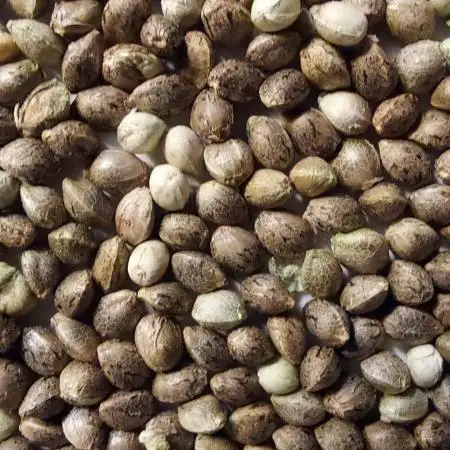The Grow Awards 2026 🏆
Water quality and what readings should be (PH/EC/TDS/SAL)
ZubbZubbstarted grow question 1y ago
Where can I find what my water Values should be? My PH is 6.2, my EC is 3.2ms, TDS is 2.3 PPThousand, and Salinity is 1.65 PPThousand of the runoff water. I'm using FFOF mixed with CoCo Coir
Open
likes
Answer
00110001001001111Oanswered grow question 1y ago
Also, remember that the ppm reading from and TDS pen is a conversion. There are several different conversion factors in use depending on the brand of equipment you buy (somehwat regional but no gaurantee of uniformity, either). This means it's a trash number that doesn't mean much. Relative to your one garden it is fine but it won't always translate to others in a meaningful way (i.e. not an apples to apples comparison). The EC is helpful, but it is a correlation to actual PPM. it can be inaccurate, obviously by the several conversion factors in use... whehter you buy a "Hanna" product (500-scale) or whatever you have (700 scale i assume), you get different PPM readings for the exact same solution and they are drastically different numbers, lol. Useless to others. You can build familiarity locally, but those numbers may mean different things in different contexts despite same reading.
So, these readings need to be put into perspective. 3.2EC might be okay. If the plant is healthy long-term (not just 'this week' or some short frame of time), then it's fine.
FFOF is a hot soil. Adding coco (comes devoid of nutes) will reduce that a bit. FFOF alone might feed your plants for 8 weeks and does not require much in the way of fertilizer during that period of time. So, consider how much coco you have, reduce that 8 week estimate proportionally, and compare to when you actually added fertilizer and if it was too soon, you probably have a buildup. If you were adding fertilizer too early, it could be a build up you want to dilute going forward. If you used the plant's growth and progression to determine when to start supplementing fertilizer, you are probably fine, but still may need to adjust based on how the plant grows going forward.
The plant tells you everything. The measurements can help, but you need to learn what the 'good' values are before you assume what range of values are proper. The type of fertilizer products you use may impact what 'good numbers' you see. The concentration you need will depends on numerous factors too... it's trial and error process. With soil if you buy the same prodcuts you can gain familiarity. if you go soilless it's more apples to apples and you can receive more specific instructions down to ppm of each nutrient element, but that is not the case with soil.
Soil fertilizers often can have a very high EC but not be toxic to the plant. The greater portion of ingredients that rely on microbes to break it down into plant-useble molecules that can enter through the roots means the EC will be higher. you have the electrical conductivity (EC) added from what the microbes break down AND the products of those interactions that are plant-available. This does not mean double, but it could.. depends on the rate of input-to-output for any one molecules being chelated or fixed etc. Not something to assume, but it definitely is happening with some 'soil' fertilizer ingredients.
So, keep an eye on the plants. What "should be" is fine to start, but you need to adjust based on the reality of the plants growth. Symptoms require an adjustment to the formula and you can avoid those symptoms next cycle etc...
If you want a more accurate understanding of the PPM of your fertilizer and have gauranteed analysis labels, there are free apps that will calculate this stuff for you. This will be an accurate PPM value vs the TDS conversion trash readings. Also, it'll be an apples-to-apples value comparable to other gardens unlike the EC-calculated ppm value.
Also, add perlite or similar to FFOF if you keep using it. Coco won't even out the gas:water mixture in the volume of substrate. FFOF comes with ~20-25% perlite? bring that proportion up to 50% - doesn't have to be perlite. Vermiculite is actually a better option as it adds some silica and can retain nutrients unlike perlite while still giving proper gas mixture for healthiest roots possible.
or, go 100% soilless and buy a set of soilless nutrients. Basically, shit or get off the pot. Lean into soil or go soilless. the hybrid stuff is akin to masturbation and has no real benefit. If coco isn't processed properly by manufacturer it can also make plants sick and even kill them at times. It's a hippie product that got popular but realyl doesn't deserve the hype around it. It's just something that absorbs water and that can be done more easily and with less risk using other products.
likes
Complain
Scrubbyjimbobanswered grow question 1y ago
When measuring runoff a lot of factors go into your readings. Not only do salts/minerals present in the soil affect the numbers but also the volume of water/feed you're running through your substrate. For instance if you're watering to barely get any runoff your runoff numbers will show higher because it's more concentrated but if you water an excessive amount when you gather the sample it can make the numbers lower because the salts are more diluted from the excessive water. 10% runoff is sufficient if you're using ferts.
A single runoff reading doesn't tell you a whole lot itself unless it's REALLY high, like if your pulling a sample with an EC around 10 you need a flush. If your consistent in your watering habits though, regular testing will clue you in on buildup before it really affects your plants. For minor build-up either increasing feed volume or intermittently pushing plain water is generally enough to combat it.
You're not really gonna find a "normal reading" online that's truly worthwhile, "normal" is gonna be so varied based off what the substrate consists of.
likes
Complain
AsNoriuanswered grow question 1y ago
came to write same thing as Mouse, what for to reinvent things ???
most of tap water comes with 7.0-8.0 ph and 150-500 ppm straight from tap, they use chlorines, that should be sorted before using it for plants.
in most countries you can check your water supplier for breakdown. in UK and in few EU countries i needed that info , it was easy to find...
likes
Complain
m0useanswered grow question 1y ago
most users on the site are familiar with the scale 1EC=500PPM** million vs thousand. just round the decimal.
Eg. 1PPT = 1,000PPM PPT can also be confused with parts per trillion vs thousand.
My hard water "tap" is anywhere between 150-230PPM on a 500 scale Or a EC of 0.46
Some people have much better water and their PPM/EC is much lower, like around 50-90PPM or 0.1-0.18EC
EC is always the better option as 1EC=1EC almost always on these handheld quick read devices/pens.
** PPM is a calculation and some meters do not do it the same. Most meters for North America use 500 Scale, some in the EU use a 700 scale and some other places use a 640scale. all it means is the calculation/measurement is different. so 500PM or 640PM or 700PPM depending on the device = 1EC. It should say in your meters documents. Or you can contact the manufacture and ask them. Mine did not say and when I emailed them they confirmed it uses the 500scale. So I know for every 500PPM it reads its equal to 1EC. Why they did not just use EC as the meter standard is beyond me. Most have the option to do both mine was only PPM. :(
A note on EC.
depending how the meter displays it, you might get a different reading.
This site uses it in millisiemens per centimeter (mS/cm), so when it say 1EC in the diary they are referring to that measurement.
https://www.translatorscafe.com/unit-converter/en-US/electric-conductivity/
hears a site that helps convert all that. you can pick PPM scales or different EC, its mostly just moving the decimal point over a bit.
I wonder if your pen is using 500scale for salinity and 700scale for TDS. weird why it has two different readings on it when its doing the same thing, measuring the conductivity of the solution. Thats all these devices do. Unless that's two different devices, then one maybe be a different scale or its just off, should be the same result I feel, unless i missing something.
3.2EC = 2,240PPM/700scale = 2.24PPT "TDS"
3.2EC = 1,600PPM/500scale = 1.6PPT "salinity"
bother a close but not 100% so IDK. need more information on the device your useing and if its been calabrated.
FFOF is a hot soil. meaning Its EC charge is a lot. I try not to get runoff with soils as it depletes them too fast.
1 like
Complain





